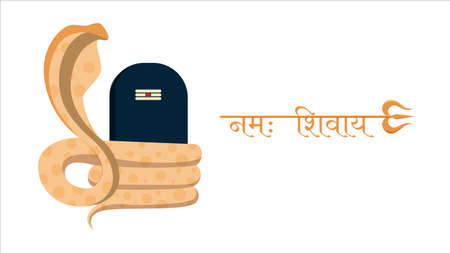Understanding Child Plan Policy in India
In the Indian context, ensuring a child’s future security is a top priority for most families. A Child Plan Policy is a specialized life insurance product designed to support this goal by offering both protection and savings for children’s future milestones, such as higher education and marriage. These policies are tailored to suit the unique financial planning needs of Indian households, considering cultural values like long-term family security and aspirations for children’s growth. By systematically investing through a Child Plan, parents can build a corpus over time that acts as a financial cushion against unforeseen events and rising costs of education or wedding expenses. The policy not only provides life cover but also instills disciplined savings habits, making it an essential component of responsible parenting in India. Through features like maturity benefits, partial withdrawals, and flexible premium payment options, Child Plans play a pivotal role in helping Indian families realise their children’s dreams without financial strain.
Significance of Timely Policy Renewal
Renewing a Child Plan policy on time holds immense importance, especially in the Indian context where financial planning for a child’s future is a priority for most families. Timely renewal ensures that your child continues to enjoy life cover and other essential benefits without any interruptions. In India, missing a renewal date may lead to policy lapses, resulting in the loss of accrued benefits and putting your childs financial security at risk. Furthermore, certain plans offer bonuses or loyalty additions, which are only available if the policy remains active throughout its tenure. Timely renewal also keeps you eligible for future payouts such as maturity benefits or education fund disbursements, which are critical during significant milestones in your childs life like higher education or marriage.
Key Reasons for On-Time Renewal
| Reason | Impact |
|---|---|
| Continued Life Cover | Ensures uninterrupted protection for your child against unforeseen events. |
| Eligibility for Future Benefits | Keeps you entitled to bonuses, maturity benefits, and educational payouts. |
| Avoiding Policy Lapse | Prevents loss of all accrued benefits and avoids the hassle of policy reinstatement. |
Cultural Perspective: Indian Family Priorities
In Indian culture, securing a childs future is closely tied to family honour and long-term wellbeing. A lapsed policy can cause not just financial strain but also emotional stress, as parents may feel they have failed in their duty towards their child’s welfare. Thus, timely renewals reflect responsible parenting—a value deeply ingrained in Indian society.

3. Premium Payment Options Available
In the dynamic landscape of Indian financial services, policyholders are offered a range of premium payment options to ensure the renewal of their child plan policies is both convenient and accessible. Understanding these modes is crucial, as timely premium payments safeguard the continuity of benefits and the financial security promised by child insurance plans.
Online Payments: The Digital India Advantage
Driven by the Digital India initiative, most insurers now facilitate online premium payments through their official portals and mobile apps. Customers can log in using their policy details and pay premiums via net banking, debit/credit cards, UPI, or even digital wallets like Paytm and PhonePe. This mode is highly preferred for its 24×7 availability, instant transaction confirmation, and ease of access from urban metros to Tier-2 towns.
Auto-Debit: Set-and-Forget Convenience
Many Indian families choose auto-debit options, where the premium amount is automatically deducted from their savings or current account on the due date. This facility—enabled through Electronic Clearing Service (ECS), NACH mandate, or standing instructions—minimises the risk of policy lapse due to missed payments. It is particularly popular among salaried individuals who seek peace of mind and disciplined financial planning.
Post Office and Bank Counter Payments: Traditional Yet Trusted
Despite increasing digital adoption, a significant section of India’s population still relies on traditional payment channels. Most major insurers collaborate with India Post and leading public/private sector banks to accept cash or cheque payments at their counters. This option is especially valued in rural areas or among those less comfortable with technology, ensuring inclusive access to essential financial products.
Mobile Banking: Financial Inclusion on the Go
With smartphones becoming ubiquitous across urban and semi-urban India, mobile banking apps offer another layer of convenience. Policyholders can use their bank’s app to pay premiums seamlessly, check due dates, download receipts, and even set up reminders. The integration of regional languages further enhances accessibility for diverse linguistic groups across the country.
Conclusion: Empowering Policyholders Through Choice
The wide spectrum of premium payment options reflects the evolving preferences and infrastructural diversity across India. Whether leveraging cutting-edge digital tools or opting for trusted traditional methods, policyholders have multiple avenues to ensure uninterrupted coverage for their child plan policies—fostering long-term financial security for Indian families.
4. Key Considerations for Indian Policyholders
When it comes to child plan policy renewal and premium payment options in India, understanding the local context is crucial for making informed decisions. Indian households display a unique blend of traditional practices and growing adoption of digital solutions. Below, we discuss the key considerations that every policyholder should keep in mind.
Traditional vs. Digital Payment Practices
Indian families have long relied on conventional payment methods such as cash deposits at branch offices, cheques, and demand drafts. However, with rapid digitisation and government initiatives like Digital India, there is a noticeable shift toward online payments through net banking, UPI (Unified Payments Interface), mobile wallets, and insurer websites/apps.
| Payment Method | Features | Suitability |
|---|---|---|
| Cash/Cheque at Branch | Physical visit required, receipt issued instantly | Preferred by senior citizens or those less tech-savvy |
| Net Banking/UPI/Mobile Wallets | Instant payment, convenient, secure | Younger families, urban areas, digitally aware users |
| Auto-debit/ECS Mandate | Automated premium deductions from account | Busy professionals seeking hassle-free renewals |
Common Renewal Challenges Faced by Indians
- Lack of timely reminders: Many households miss renewal dates due to insufficient reminders from insurers or lack of digital connectivity.
- Cumbersome documentation: Traditional paperwork can be time-consuming and confusing for some policyholders.
- Payment infrastructure gaps: Rural and semi-urban regions may face limited access to digital payment facilities.
- Language barriers: Communications not always available in regional languages can lead to misunderstandings about deadlines and payment options.
The Importance of Grace Periods
A grace period is the extra time allowed after the premium due date to make payments without losing policy benefits. In India, most insurers offer a 15-30 day grace period for child plans. During this time, policyholders can pay overdue premiums without penalty. However, missing the grace period can result in policy lapse or loss of accumulated benefits—a significant concern for Indian parents investing in their childs future.
Tailored Tips for Indian Households
- Register for SMS/email alerts: Ensure you receive timely notifications about premium due dates and renewal reminders in your preferred language.
- Diversify payment options: Use both traditional and digital methods as per convenience; consider setting up auto-debit for seamless renewals.
- Keep documents handy: Maintain a folder (physical or digital) with all policy-related paperwork to avoid last-minute hassles.
- Select reputable insurers: Choose companies with strong customer support in your region and multilingual service channels.
- Educate family members: Make sure all adults in the household are aware of the policy details and renewal process so that payments are not missed during emergencies.
This balanced approach—combining modern technology with traditional wisdom—empowers Indian families to effectively manage child plan renewals and protect their childrens financial future.
5. Addressing Missed Premiums and Policy Revival
It is not uncommon for policyholders in India to miss a premium payment due to unavoidable circumstances such as financial constraints or oversight. However, missing a premium does not mean the end of your childs future security. Indian insurance providers typically offer a grace period—usually 15 to 30 days from the premium due date—during which you can pay the outstanding amount without any penalty. If the premium remains unpaid even after this period, the child plan policy may lapse, putting at risk the benefits and coverage it offers.
Understanding the Revival Process
If your child plan has lapsed, most insurers in India allow you to revive it within a stipulated revival period, often up to two years from the date of lapse. To initiate the revival process, you need to submit a formal application for policy revival with your insurer. The process generally involves paying all outstanding premiums along with applicable interest or late fees as specified by the insurance company.
Penalties and Charges
While reviving a lapsed child plan, insurers might levy an interest rate ranging from 8% to 10% per annum on overdue premiums. Some companies may also charge a nominal revival fee. It is important to confirm these charges with your insurer beforehand so that you are prepared for the total cost involved in reactivating your policy.
Required Documentation
Along with the revival application and pending payments, insurers may ask for supporting documents such as proof of continued insurability (like medical reports), KYC documents (Aadhaar card, PAN card), and sometimes a declaration of good health. These requirements ensure that the insurer can assess any new risks before reinstating your policy’s benefits.
Timely action is crucial when addressing missed premiums under a child plan policy in India. By understanding and following the correct revival procedures, you can ensure uninterrupted protection for your childs future aspirations.
6. Frequently Asked Questions in the Indian Context
What should I do if I miss my child plan policy renewal date?
If you miss your renewal date, most insurance providers in India offer a grace period (usually 15 to 30 days) for premium payment. During this time, you can pay without losing benefits. It’s advisable to contact your insurer or check your policy document for specific timelines and procedures applicable to your plan.
Are online premium payments secure in India?
Yes, major insurers in India use robust encryption and secure gateways for online transactions. You can safely make premium payments via net banking, UPI, credit/debit cards, or authorised mobile apps. Always ensure you are using the official website or app of your insurer and avoid sharing OTPs or confidential details with anyone.
Can I change my premium payment frequency?
Many Indian insurers allow flexibility in premium payment frequencies—annual, semi-annual, quarterly, or monthly. You can usually request a change at the time of policy renewal by contacting your agent or customer service helpline. Ensure you understand how the change may impact your overall benefits and cost structure.
What if I cannot afford the premium during a particular year?
If you are facing financial constraints, some policies offer features like premium holidays or reduced paid-up options. Check with your insurance provider about available solutions before missing a payment to prevent policy lapse and protect your child’s future security.
Where can I get assistance if I have queries regarding my child plan?
You can reach out to the insurance company’s toll-free customer care numbers, local branch offices, or your assigned insurance advisor. Most insurers also provide support through WhatsApp, email, or chatbots on their websites for quick resolution of doubts regarding renewals, payments, and policy benefits.
How do I ensure my policy remains active and beneficial?
Timely renewals and regular premium payments are crucial. Set reminders on your mobile phone or use auto-debit facilities offered by banks. Review your policy annually to ensure it aligns with your changing financial goals and consult with certified agents for personalised advice relevant to Indian market conditions.

